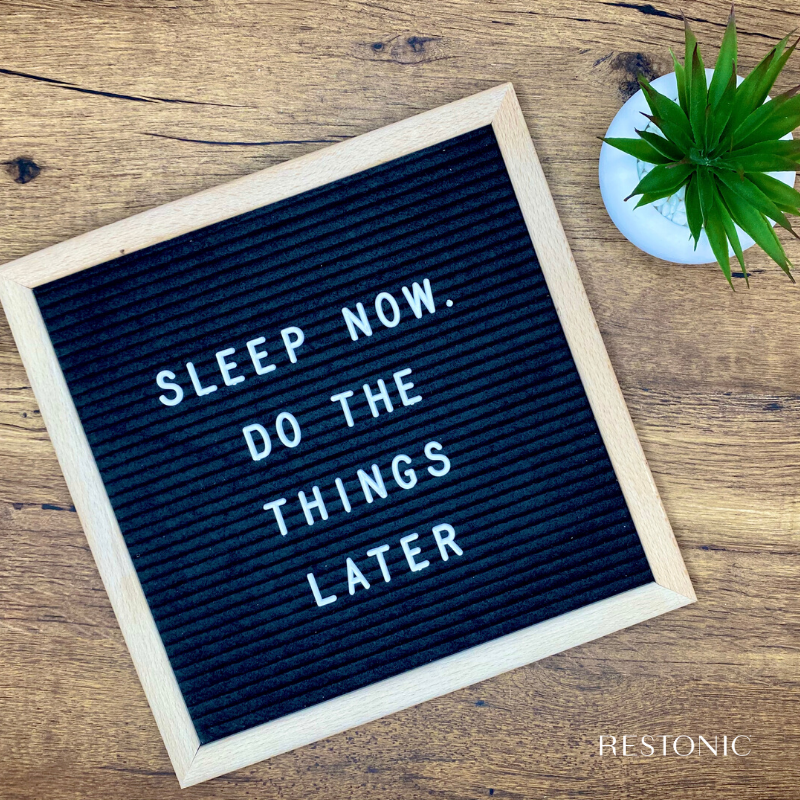Sleep facts 101 – and some foolish sleep myths debunked
Sleep plays a crucial part in our lives and although we spend a lot of time doing it (1/3 of our lives) it’s shocking how little we know about it. And while most of us cherish crawling into bed after a long day, we do it differently around the world. Get ready for some fun learning!
10 fascinating facts about sleep
 Babies steal 1,055 hours from their parents. According to research, new parents lose an average of 44 days of sleep per year from their beautiful, sleepless newborn. No wonder new parents are always tired!
Babies steal 1,055 hours from their parents. According to research, new parents lose an average of 44 days of sleep per year from their beautiful, sleepless newborn. No wonder new parents are always tired!
- Humans can sleep with their eyes open. Yes, you can sleep with your eyes open. Micro-sleeps can last 4-5 seconds, which doesn’t seem like a long time – but it’s long enough to cross the centerline on the highway and crash. Driving tired is as dangerous as driving drunk.
- Altitude disrupts sleep. Due to lower amounts of oxygen at altitudes of 13,200 feet or higher, it’s much harder to get your snooze on. Be careful next time you’re visiting the Rocky Mountains.
- Some people dream in black and white. Studies show only 12% of people dream in black and white. Surprisingly, this number was 75% before the evolution of color televisions.
- Humans are the only mammal that can delay sleep. Dogs, cows and even sheep must go to sleep when their body tells them to. We have the ability to defer sleep (to a limit, of course) and finish doing what’s capturing our attention at the moment.
- 11 days is the record for the longest period without sleep. In 1964, Randy Gardner fought exhaustion and suffered extreme sleep deprivation after his feat. We definitely don’t recommend trying this – in 2012, a Chinese man died from staying awake 11 days to watch soccer. No thanks!
- It’s common for the deaf to sign in their sleep. Just like talking in your sleep, the hearing impaired communicate via sign language while sleeping. There are many recorded instances of people who have reported seeing their deaf partner or child signing while snoozing.
- You can’t sneeze while sleeping. Humans aren’t prone to sneezing while asleep, and since we aren’t moving to stir up dust particles, the reaction doesn’t occur.
- The strangers in your dreams aren’t strangers. You might know some of them personally, but you’ve seen everyone in your dreams Crazy, right? The brain can’t create people, so it uses registered faces to populate your dreams.
- You grow .3 inches while sleeping. But the growth is temporary as you shrink back down to normal after you’re awake for a few hours. When you sit or stand, your cartilage discs are squeezed by gravity, like sponges.
12 fascinating facts about sleep from around the world
While we all want a comfortable sleep bed and cozy sheets, what do other cultures around the globe prefer when it comes to catching some zzz’s?
- Residents of Japan and the United States get the least amount of sleep.
- People in the United States are more likely to sleep with a pet.
- 1/3 of people in the United Kingdom prefer to shed their pajamas and sleep in their birthday suits.
- Americans love their pillows, most tending to sleep with more than one at a time.
 In Mexico, they make their beds in the morning when they rise and many change their sheets more than once a week. The average American family changes their sheets once a month…
In Mexico, they make their beds in the morning when they rise and many change their sheets more than once a week. The average American family changes their sheets once a month…
- While watching TV before bed seems to be a (mostly) global habit, people in France generally poo-poo late-night electronic distractions and opt for a good meal with friends or family. In Mexico, they prefer praying or meditating before bed.
- Many Mediterranean countries (including Italy and Spain) have culturally ingrained siestas. After lunch, many businesses close down and everyone heads home for a long afternoon nap. They often work later hours to offset their siestas.
- The Japanese are known for taking a nap at work, known as inemuri. Napping at work in Japan shows an employee’s professional commitment to working hard long hours – the nap is a sign the employee will arrive early and stay later into the night.
- In Afghanistan, not only do family members all sleep in the same room but in the morning, they fold up their mattresses and blankets so the room is available for daytime use. Even houseguests are expected to join the pajama party.
- In Scandinavia, it’s not uncommon for people to leave their babies by themselves to nap outside in strollers – even during the winter. In fact, children often sleep outside during the day, both at daycare and on the sidewalk while the parents are inside a café or restaurant. Many parents believe that the cold air is healthy for children.
- While kids in the United States tend to have earlier bedtimes, giving parents a few hours of grown-up time in the evenings, in Spain and Argentina, kids burn the midnight oil right beside their parents, often staying up as late as 10:00 pm.
- In the United Kingdom, a relaxing drink, such as tea, before heading to bed is a common activity.
Rest well & wake up ready to go!
Better sleep gives rise to better mornings, bringing your goals into focus and dreams within reach. Hungry for more sleep info? Dig into these posts:
Eager for more sleep info you can really use?
Join our community
Facebook
and let's continue the conversation.
We'd love to hear what you have to say!
This blog does not provide medical advice. It is intended for general informational purposes only and does not address individual circumstances. It is not a substitute for professional medical advice, diagnosis or treatment and should not be relied on to make decisions about your health. Never ignore professional medical advice in seeking treatment because of something you have read on Restonic.com. If you think you may have a medical emergency, immediately call your doctor or dial 911.

